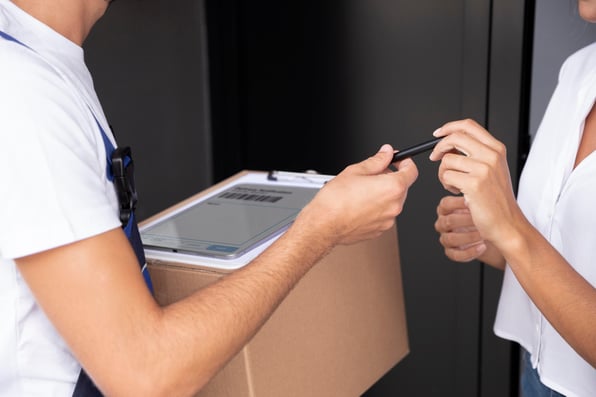
Top 10 challenges faced while implementing CMMS
Ciprian Chiripuci

In today's business world, Computerized Maintenance Management Systems (CMMS) are becoming an integral part of asset management strategies across various industries. CMMS is a software that manages and maintains a company's assets, including equipment, machinery and facilities. CMMS helps to increase asset reliability, reduce downtime and optimize maintenance costs. However, implementing a CMMS can be a challenging process. In this article, we will discuss top 10 challenges faced while implementing CMMS and how to overcome them.
Top 10 challenges
Data Management
One of the most significant challenges of implementing a CMMS is managing data. Data management includes collecting, inputting and updating all the necessary information related to assets and maintenance schedules. A CMMS is only as good as the data it contains. Therefore, it is essential to ensure that the data entered is accurate and up-to-date. Companies should have a standardized data management process in place before implementing a CMMS.
User Adoption
User adoption is another significant challenge when implementing a CMMS. Employees may be resistant to change and may not be willing to learn a new system. Training is essential to ensure that employees are comfortable using the system. Moreover, it is important to provide ongoing support to users to address any issues or questions that may arise.
Integration
Another challenge of implementing a CMMS is integrating it with other systems such as Enterprise Resource Planning (ERP) systems, Accounting Software and other third-party applications. Integration can be a complex process and it is important to ensure that all systems are working together seamlessly.
System Configuration
The configuration of a CMMS is critical to its success. Configuring the system involves setting up workflows, maintenance schedules, work orders and other critical features. It is essential to have a clear understanding of the company's maintenance processes to configure the system correctly. Moreover, it is important to review and update the system configuration periodically to ensure that it continues to meet the company's changing needs.
Data Security
Data security is an essential aspect of any software implementation. With a CMMS, it is crucial to ensure that sensitive data, such as equipment information and maintenance schedules, is kept secure. Companies should have a robust data security plan in place to protect against potential threats.
System Scalability
Scalability of a CMMS is another challenge that companies may face. As the company grows, CMMS should be able to scale to meet its changing needs. It is essential to choose a CMMS that can grow with the company and support new features and functionality as needed.
Maintenance Strategy Alignment
To get the most out of a CMMS, it is essential to align maintenance strategy with software. This means ensuring that the maintenance schedules and workflows within the CMMS align with the company's overall maintenance strategy. This alignment will help to optimize maintenance costs and increase asset reliability.
Change Management
Implementing a CMMS requires significant change within an organization. Change management is critical to ensure that the implementation process runs smoothly. This involves communicating the benefits of the new system to employees, training them on the system and providing ongoing support to address any concerns or issues that may arise.
System Upgrades
Like any software system, a Computerized Maintenance Management System requires periodic upgrades. Upgrades are essential to ensure that the system continues to meet the company's changing needs and stays up-to-date with new technologies. It is essential to plan and budget for upgrades to ensure that the system continues to function correctly.
Return on Investment (ROI)
Finally, measuring return on investment (ROI) of a CMMS can be a challenge. It is essential to establish a baseline for maintenance costs and track changes in maintenance costs after implementing CMMS. This will help to determine the ROI of the system and identify areas where further improvements can be made.
Overcoming Challenges
While implementing a CMMS can be a challenging process, there are several strategies that companies can use to overcome these challenges. Here are some of the best practices that companies can follow:
Plan Ahead
Before implementing a CMMS, companies should have a well-defined plan in place. This plan should include scope of the project, timeline, budget and resources needed. This will help to ensure that the project stays on track and is completed on time and within budget.
Involve Key Stakeholders
Include maintenance managers, IT personnel and end-users. Involving key stakeholders will help to ensure that the system meets the needs of the company and is accepted by end-users.
Provide Adequate Training
This includes initial training as well as ongoing training and support. Companies should invest in training programs to ensure that employees are comfortable using the system and understand its benefits.
Choose the Right System
Companies should choose a system that meets their specific needs and has the features and functionality that they require. It is important to choose a system that is scalable and can grow with the company.
Communicate Benefits
It is essential to gain acceptance from end-users. Companies should clearly communicate the benefits of the system, such as increased asset reliability, reduced downtime and lower maintenance costs.
Implementing a Computerized Maintenance Management System can be a complex and challenging process. However, by following best practices such as planning ahead, involving key stakeholders, providing adequate training, choosing the right system and communicating the benefits, companies can overcome these challenges and reap the benefits of a well-implemented CMMS. By effectively managing data, ensuring user adoption, integrating the system and configuring it properly, companies can achieve a higher level of maintenance efficiency and increase their bottom line.
Related posts
Here are some resources to help you get more out of your assets


Ciprian Chiripuci
Truck Sealing in Delivery Logistics: Definition, Benefits and Best Practices

Ciprian Chiripuci
Mastering that Last Mile
READY TO TALK?